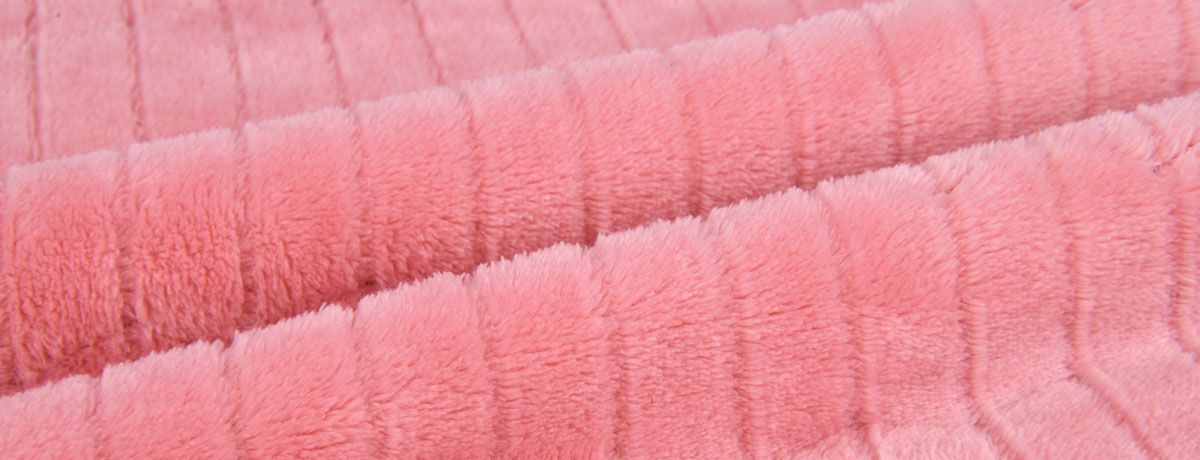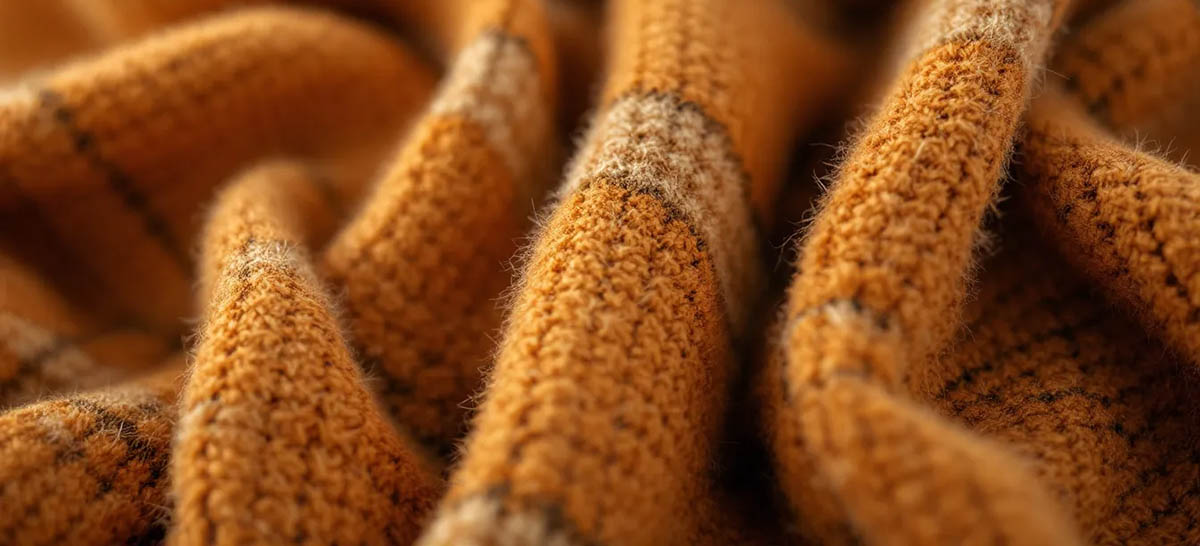The Versatile World of Flannel Fabric Material: Types and Uses

Flannel fabric material stands out for its softness and warmth. But what exactly is it? This article covers what makes flannel unique, the types available, and its uses.
Key Takeaways
-
Flannel fabric, made from materials like cotton, wool, and synthetics, is known for its softness, warmth, and versatility in applications ranging from clothing to home textiles.
-
Modern variations of flannel have expanded its uses, with synthetic blends offering cost-effectiveness and enhanced durability, while traditional options maintain their popularity for comfort.
-
Choosing the right flannel requires consideration of material, weight, and intended use to ensure optimal comfort and functionality for specific projects.
Understanding Flannel Fabric Material

Flannel fabric is cherished for its softness and warmth, making it an ideal choice for various clothing items and home textiles. The production of flannel involves several stages, from sourcing the base material to the final treatments, which enhance its unique characteristics.
This material is extensively used for bedding, clothing, and accessories, thanks to its comfort and insulating properties. Let’s delve deeper into what makes flannel so special.
What is flannel?
Flannel is a fabric typically made from cotton, wool, or synthetic fibers, celebrated for its warmth and soft texture. Its softness and durability make it a preferred choice for various applications, ranging from cozy flannel sheets to stylish plaid shirts. The fabric’s unique qualities stem from the specific materials used and the weaving techniques employed, which enhance its comfort and durability.
Flannel is used in a variety of items, including:
-
Shirts and pajamas
-
Accessories like flannel-lined gloves and belts, combining style and functionality
-
Baby flannel designed for sensitive skin
-
Durable wool flannel for outerwear
This fabric’s versatility is truly remarkable.
Modern flannel
Today’s flannel fabrics come in a variety of materials, including traditional wool and contemporary synthetic blends. Nowadays, these modern variations have expanded the fabric’s applications, making it a staple in contemporary fashion and home decor. The incorporation of synthetic blends alongside traditional wool has allowed for greater flexibility in design and functionality.
The availability of different types of flannel means there is a perfect option for every need. Whether you’re looking for incredibly soft baby flannel, durable wool flannel, or cost-effective synthetic blends, the modern flannel market offers endless possibilities. This evolution in material composition has ensured that flannel remains a favorite fabric for many.
How Flannel Fabric is Made
The created flannel fabric is a meticulous process that involves several key stages, starting with the selection of raw materials. This ensures the final product meets the desired standards of softness and warmth.
The journey from raw fiber to finished silk fabric is fascinating and highlights the history of the craftsmanship involved in producing this beloved textile, including its various creations and the lining. Discover the intricate process that brings these elements together.
Raw materials
Flannel can be made from various fibers, including cotton, polyester, and blended fibers, each chosen for their unique properties. Synthetic flannel, often incorporating polyester, is favored for its durability and cost-effectiveness. These materials provide resilience, quick-drying capabilities, and wrinkle resistance, making them ideal for a wide range of applications.
Yarn spinning and weaving
The yarn used in flannel is spun from either cotton, wool, or synthetic fibers, influencing the fabric’s overall feel and functionality. The thickness and texture of the spun yarn can significantly impact the softness and durability of the final product. Weaving techniques like twill or plain weave are employed to create the fabric, each contributing unique qualities to the final flannel.
These spinning and woven methods work together to produce a fabric that is both soft and durable, suitable for various applications, from cozy weave flannel sheets to sturdy outerwear. The intricate process ensures that flannel maintains its reputation as a warm and comfortable material.
Napping and finishing
Napping is a crucial step in the production of flannel, involving the brushing of the fabric to create a fuzzy texture that enhances its comfort and warmth. This process raises the fibers on the fabric’s surface, resulting in increased softness and warmth, making flannel a favorite for cozy apparel and bedding. After the fabric is napped, it becomes even more inviting for use in various products.
Following the napping process, additional treatments like dyes may be applied to achieve the desired color and finish. These finishing touches not only enhance the fabric’s appearance but also contribute to its durability and overall quality, ensuring that flannel remains a beloved choice for various applications.
Types of Flannel Fabric

Flannel fabric comes in various types, each with distinct properties and uses. From the classic cotton flannel to the durable wool flannel and innovative synthetic blends, there’s a flannel for every need.
Understanding these different types can help you choose the right fabric for your next project.
Cotton flannel
Cotton flannel is renowned for its softness and comfort, making it a popular choice for clothing and home textiles. Made from carded cottons fibers, this cotton fabric is breathable and gentle on the skin, ideal for cozy flannel sheets and comfortable pajamas. The 100% cotton flannel is particularly valued for its incredibly soft texture, making it a favorite among consumers.
This type of flannel is also versatile, suitable for a wide range of applications including casual shirts, dresses, and bedding items. Whether you’re looking to create a cozy winter wardrobe or comfortable home textiles, cotton flannel is an excellent choice.
Wool flannel
Wool flannel offers excellent warmth and durability, making it a suitable choice for outerwear in cold climates. Its natural flame resistance adds to its appeal, providing additional safety in winter garments. This type of flannel is often used in high-end clothing items like tailored suits and skirts, where its insulating properties and warm fabric are highly valued.
The texture and weight of wool flannel make it ideal for creating structured garments that provide both style and functionality. If you’re looking for a fabric that offers superior warmth and durability, wool flannel is an excellent option.
Synthetic and blended flannel
Synthetic and blended flannel fabrics combine fibers like polyester with natural ones to enhance durability and reduce costs. These blends offer:
-
Improved resilience
-
More budget-friendly options than traditional materials
-
Quick-drying capabilities provided by synthetic fibers
-
Wrinkle resistance, making them practical for everyday use.
Ningbo MH offers various weights, colors, and finishes of synthetic and blended flannel to meet the diverse needs of manufacturers. Whether you’re looking for a durable fabric for outdoor gear or a cost-effective option for casual wear, synthetic and blended flannel fabrics provide endless possibilities.
Specialty flannels
Specialty flannels cater to specific needs and applications. Baby flannel, for instance, is known for its softness and breathable qualities, making it ideal for sensitive infant skin. Similarly, diaper flannel is highly absorbent and quick-drying, perfect for making cloth diapers that keep babies dry and comfortable.
Another unique type is vegetable flannel, made from sustainable fibers, offering an eco-friendly option for those looking to reduce their environmental footprint. These specialty flannels highlight the versatility of this fabric, providing tailored solutions for various needs.
Common Uses of Flannel Fabric
Flannel fabric’s versatility extends across multiple market categories, from apparel to home textiles and accessories. Its softness, warmth, and durability make it a popular choice for various applications, ensuring comfort and style in everyday use.
Apparel
Flannel shirts, pajamas, and dresses are staples in casual and winter clothing, cherished for their comfort and insulating properties. Cotton flannel, in particular, is popular for its softness and breathability, making it ideal for winter wear and cozy bedding. Specialty flannels, such as baby flannel and diaper flannel, are designed for specific uses, ensuring comfort and functionality in sensitive applications.
Flannel is not only used for shirts and pajamas. It is also utilized in cardigans and other layering garments to provide warmth. Its versatility in apparel showcases its ability to provide comfort and style across various items, making it a beloved choice for many.
Home textiles
Flannel is a popular choice for bedding items like sheets and blankets, particularly favored for its softness and comfort. Flannel sheets provide a cozy feel, enhancing comfort during colder months, making them a preferred option for winter bedding. The warmth and softness of flannel blankets and throws make them ideal for keeping warm during cold weather.
Flannel is also commonly used for duvet covers and other home textiles, providing a warm and comfortable environment. Whether you’re looking to create a cozy bedroom or add warmth to your living space, flannel home textiles offer a perfect solution.
Accessories and other uses
Flannel is not limited to clothing and home textiles; it is also crafted into various accessories, including:
-
bags
-
hats
-
scarves These accessories often showcase traditional plaid designs and combine style and functionality, adding a touch of classic charm to everyday items.
In addition to accessories, flannel is used in crafting items like belts and gloves, highlighting its versatility and endless possibilities. Whether you’re looking for a stylish accessory or a practical item, flannel offers numerous creative applications.
Flannel Fabric Care Tips
Proper care of flannel garments is supposed to extend their lifespan through maintenance, promoting responsible consumption and ensuring they remain soft and comfortable.
Here are some tips to help you maintain your flannel items in top condition.
Washing instructions
To preserve the quality of your flannel fabric:
-
Use a gentle cycle with cool water and a small amount of detergent.
-
Use lukewarm water and a gentle cycle to help maintain the fabric’s softness.
-
Avoid using detergents with chlorine or phosphates, as these can damage the fabric.
Wash flannel items separately to prevent color bleeding and reduce wear.
Drying and ironing
Flannel fabric should be dried on low heat to prevent shrinkage. Avoid high heat when drying cotton flannel; instead, opt for medium heat or air drying.
Proper drying is crucial to maintain the quality and prevent shrinkage of flannel fabric.
Storage recommendations
When storing flannel items, avoid folding them tightly to reduce creases and maintain their shape. This will help keep your flannel garments and home textiles in good condition, ready for their next use.
Choosing the Right Flannel Fabric
Selecting the right flannel involves understanding its fine material, weight, and intended use to achieve the desired comfort and functionality.
Here are some tips to help you make the best choice.
Consider the material
Choosing between cotton, wool, or synthetic flannel affects comfort, warmth, and durability in various applications. Cotton flannel is often preferred for its softness and comfort, making it suitable for clothing like pajamas and shirts.
Wool flannel offers natural flame resistance and is excellent for outerwear, while synthetic blends provide enhanced durability and cost-effectiveness. Consider your specific needs and preferences when selecting the material to ensure you get the best performance from your flannel fabric.
Weight and thickness
The weight and thickness of flannel fabric are essential factors that influence its comfort, warmth, and suitability for various projects. Lightweight flannel is ideal for making breathable shirts and garments that require comfort without too much warmth.
Medium-weight flannel provides versatility, suitable for a variety of clothing and home textiles such as pajamas and sheets. Heavyweight flannel is best suited for winter blankets and coats, providing maximum warmth for cold weather.
Intended use
The application of flannel influences the selection of its type based on required characteristics like breathability and warmth. For clothing, choose flannel that offers the right balance of comfort and durability.
For bedding, opt for softer, medium-weight flannel to ensure warmth and coziness. When selecting flannel for baby items, prioritize softness and safety to ensure it is gentle on the skin.
For crafting, consider the ease of sewing with cotton flannel or the added structure provided by wool flannel.
Wholesale Order
For those interested in bulk purchases, Ningbo MH is a global wholesale supplier of flannel and garment materials, serving over 150 countries. They focus exclusively on bulk wholesale, offering various weights, colors, and finishes to meet the diverse needs of manufacturers.
Whether you need flannel for clothing, home textiles, or accessories, Ningbo MH ensures high-quality materials and reliable delivery for all orders shipped worldwide.
Summary
Flannel fabric’s versatility, warmth, and softness make it a beloved choice for many applications, from cozy clothing to comfortable home textiles. Understanding the different types of flannel and their specific uses can help you select the perfect fabric for your needs. Proper care and thoughtful selection will ensure that your flannel items remain soft, warm, and durable for years to come. Embrace the endless possibilities flannel offers and enjoy the comfort and style it brings to your life.
Frequently Asked Questions
What is flannel fabric made from?
Flannel fabric is primarily made from cotton, wool, or synthetic fibers, each contributing distinct qualities such as softness and warmth. This versatility makes flannel a popular choice for clothing and bedding.
How should I wash my flannel items to maintain their quality?
To maintain the quality of your flannel items, wash them separately on a gentle cycle with cool water using a mild detergent that is free from chlorine and phosphates. This approach will help prevent color bleeding and reduce wear.
What is the difference between cotton flannel and wool flannel?
Cotton flannel is soft and breathable, making it perfect for clothing and bedding, while wool flannel provides warmth and natural flame resistance, ideal for outerwear. Each fabric serves distinct needs based on comfort and functionality.
Can I use flannel for summer clothing?
Yes, lightweight flannel can be a comfortable option for summer clothing, as it offers breathability without excessive warmth.
Where can I buy flannel fabric in bulk?
You can buy flannel fabric in bulk from Ningbo MH, a reputable global wholesale supplier that offers a wide range of options in colors and weights to suit your needs.
Contact MH
MH offers flannel fabrics. Please contact us for more details or inquiries. We're here to help!


